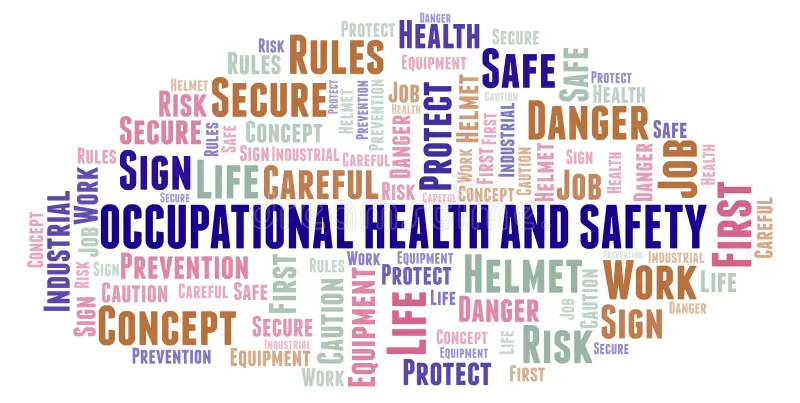In today’s fast-paced work environment, occupational health and workplace well-being have become crucial topics for both employees and employers. This comprehensive guide will explore what occupational health is, its significance, common workplace health issues, strategies for improving workplace well-being, and the role of employers in fostering a healthy work environment.https://paknokri.online/2024/10/31/best-college-or-university-for-your-goals/
| Heading | Subheadings |
|---|---|
| H1: Introduction to Occupational Health | |
| H2: Understanding Occupational Health | H3: Definition of Occupational Health H3: Importance of Occupational Health |
| H2: Common Workplace Health Issues | H3: Mental Health H3: Physical Health H3: Ergonomics H3: Workplace Hazards |
| H2: Promoting Workplace Well-Being | H3: Health and Wellness Programs H3: Work-Life Balance Initiatives H3: Employee Engagement |
| H2: The Role of Employers | H3: Creating a Supportive Environment H3: Training and Education H3: Compliance with Regulations |
| H2: Conclusion | H3: Key Takeaways H3: Future Directions |
Introduction to Occupational Health
Occupational health refers to the branch of public health that focuses on the physical and mental well-being of workers in their workplaces. It encompasses various aspects, including workplace safety, ergonomics, mental health, and employee wellness programs. The aim is to create a safe and healthy work environment that reduces risks and promotes the overall well-being of employees.
Understanding Occupational Health
Definition of Occupational Health
Occupational health is defined as a field concerned with the prevention and treatment of work-related injuries and illnesses. It involves identifying workplace hazards, assessing risks, and implementing strategies to mitigate these risks.
Importance of Occupational Health
The importance of occupational health cannot be overstated. A healthy workforce is crucial for productivity, employee satisfaction, and overall business success. Organizations that prioritize occupational health see reduced absenteeism, lower healthcare costs, and improved employee morale.
Common Workplace Health Issues
Mental Health
Mental health issues, such as stress, anxiety, and depression, are prevalent in the workplace. Factors contributing to mental health problems include workload, workplace relationships, and job insecurity. Promoting mental health awareness and providing support can significantly enhance employee well-being.
Physical Health
Physical health issues often arise from long hours of sedentary work, leading to conditions like obesity, heart disease, and musculoskeletal disorders. Employers can encourage physical health by promoting regular exercise and providing resources for healthy living.
Ergonomics
Ergonomics focuses on designing workspaces that reduce strain and injury. Proper workstation setup, adjustable furniture, and training on safe lifting techniques can prevent musculoskeletal disorders and improve employee comfort.
Workplace Hazards
Workplace hazards can be physical, chemical, biological, or ergonomic. Identifying and mitigating these hazards is essential to ensure employee safety and well-being.
Promoting Workplace Well-Being
Health and Wellness Programs
Implementing health and wellness programs is an effective way to promote employee well-being. These programs can include fitness challenges, health screenings, and workshops on nutrition and stress management.
Work-Life Balance Initiatives
Encouraging work-life balance is essential for employee satisfaction. Flexible work hours, remote work options, and support for family responsibilities can help employees achieve a healthier balance between their professional and personal lives.
Employee Engagement
Engaging employees in decision-making processes and fostering open communication can lead to a more motivated and satisfied workforce. Regular feedback and opportunities for professional development contribute to employee engagement and well-being.
The Role of Employers
Creating a Supportive Environment
Employers play a critical role in fostering a supportive work environment. This includes promoting a culture of health and well-being, providing resources, and ensuring that employees feel valued and heard.
Training and Education
Providing training and education on occupational health issues is vital. This includes informing employees about workplace hazards, proper ergonomics, and available mental health resources.
Compliance with Regulations
Employers must adhere to occupational health regulations and guidelines to ensure a safe work environment. Regular assessments and audits can help identify potential risks and ensure compliance.
Conclusion
Key Takeaways
Occupational health and workplace well-being are essential components of a successful organization. By understanding the importance of these aspects, employers can create a healthier work environment that benefits both employees and the organization as a whole.
Future Directions
As workplace dynamics evolve, the focus on occupational health and well-being will continue to grow. Employers must remain proactive in addressing health issues, implementing innovative solutions, and adapting to the changing needs of their workforce.
FAQs
- What is occupational health?
Occupational health focuses on preventing and treating work-related injuries and illnesses to ensure employee well-being. - Why is workplace well-being important?
Workplace well-being contributes to higher productivity, reduced absenteeism, and improved employee morale. - What are common workplace health issues?
Common issues include mental health problems, physical health concerns, ergonomics, and workplace hazards. - How can employers promote workplace well-being?
Employers can promote well-being through health programs, work-life balance initiatives, and fostering employee engagement. - What role do employers play in occupational health?
Employers create supportive environments, provide training, and ensure compliance with health regulations. - How can I improve my mental health at work?
Practice stress management techniques, seek support, and engage in open communication with colleagues and supervisors.










